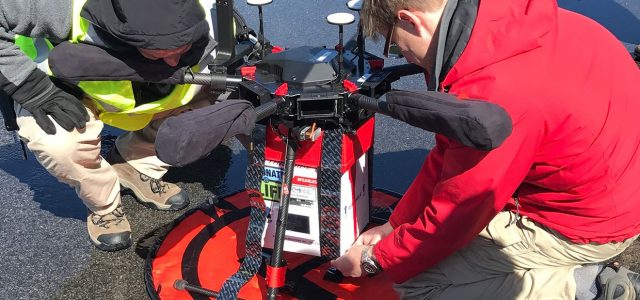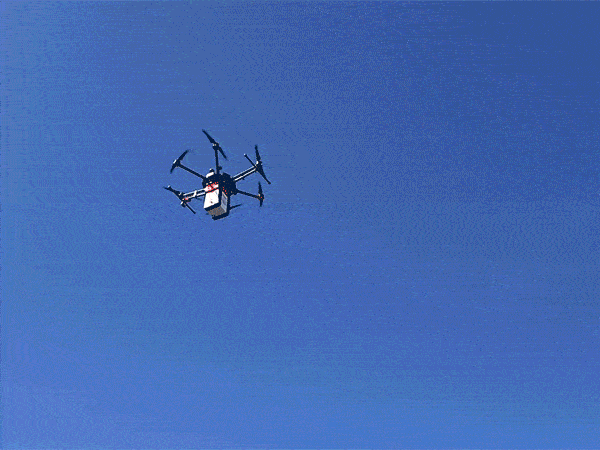Minutes matter when patients are awaiting organ transplants, so what better way to deliver organs than with a drone? Transplant surgeon Dr. Joseph Scalea of the University of Maryland Medical Center thought so, and as he noted, “I frequently encounter situations where there’s simply no way to get an organ to me fast enough to do a transplant, and then those life-saving organs do not get transplanted into my patient. And that’s frustrating, so I wanted to develop a better system for doing that.”
Dr. Scalea organized a group of researchers, including associates at the University of Maryland’s Department of Aerospace Engineering, to see whether organ delivery by drone could be a viable alternative to flying by small manned aircraft. They chose to use a DJI M600 Pro because its six motors are directly below their rotors, which would be far enough away from the center of the drone, where a smart cooler with the organ would be held in place.
To measure temperature, barometric pressure, altitude, vibration, and GPS location of the organ in flight, the team designed a specialized wireless biosensor, the Human Organ Monitoring and Quality Assurance Apparatus for Long-Distance Travel (HOMAL).
Last March, they received news that a kidney (not healthy enough for an actual transplant) was available for research and the drone was set up for its first delivery mission.
In total, the kidney was airborne for a little more than an hour over the course of 14 flight missions. For the farthest mission, the kidney flew a mile and a half, equivalent to the length of potential shipment routes for donor organs between inner city hospitals.
The researchers found that the temperature of the kidney remained stable throughout the test runs. Air pressure corresponded with altitude, and the drone-borne organ achieved a maximum speed of 0.6 miles per hour.
And as for vibration, the kidney was subjected to slightly fewer vibrations when transported in the drone compared with a control delivery mission in a fixed wing plane (a dual-engine turboprop King Air). Biopsies of the kidney before and after drone transportation revealed no damage from the journey, suggesting that the experiment—which the research team believes is the first-ever use of a drone for organ delivery—was a success.

“I think that what we did here is very cool, very exciting,” says Scalea. “This is the first step among a series that I think will get patients closer to their life-saving organs quicker, and with better outcomes.”




















